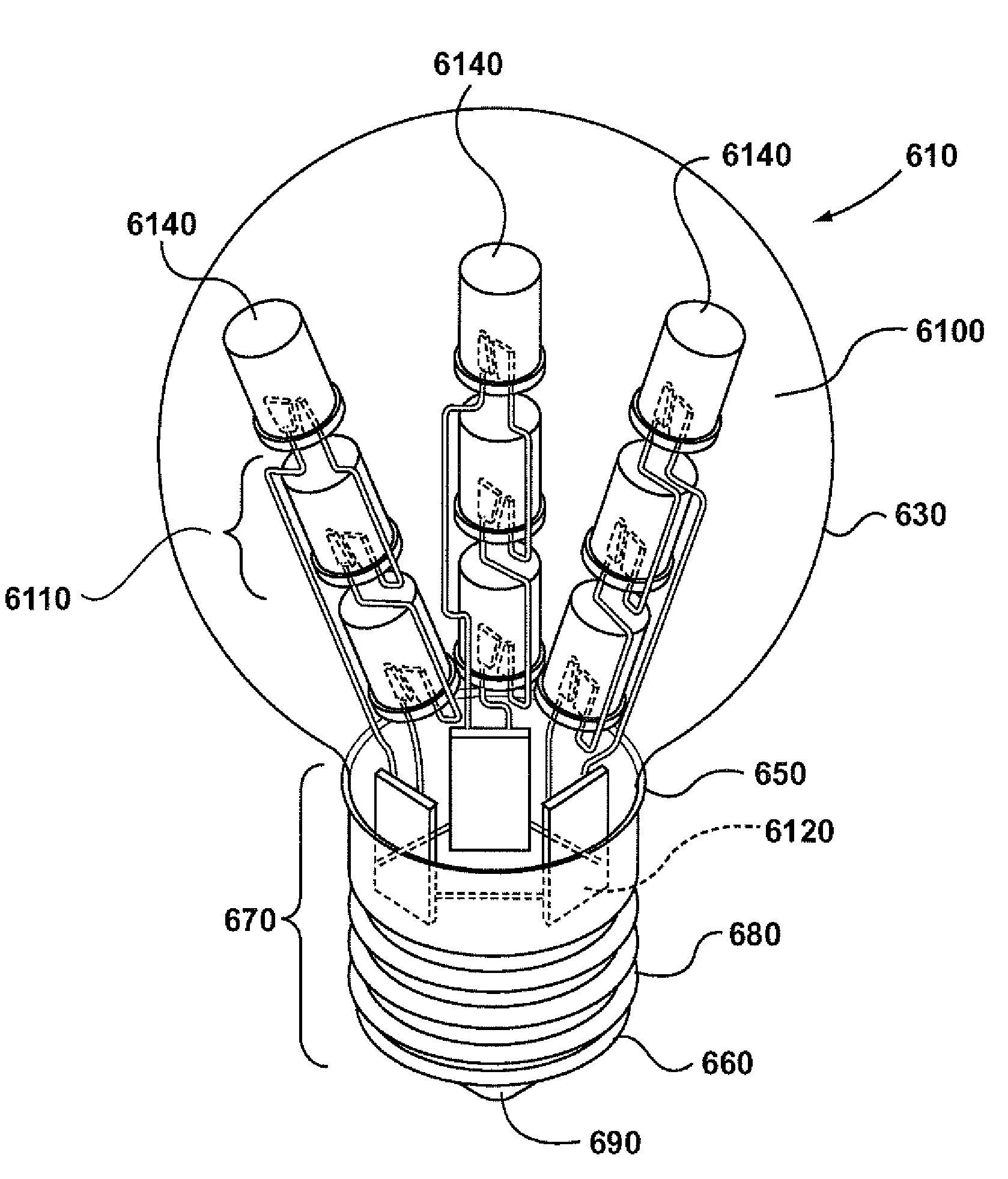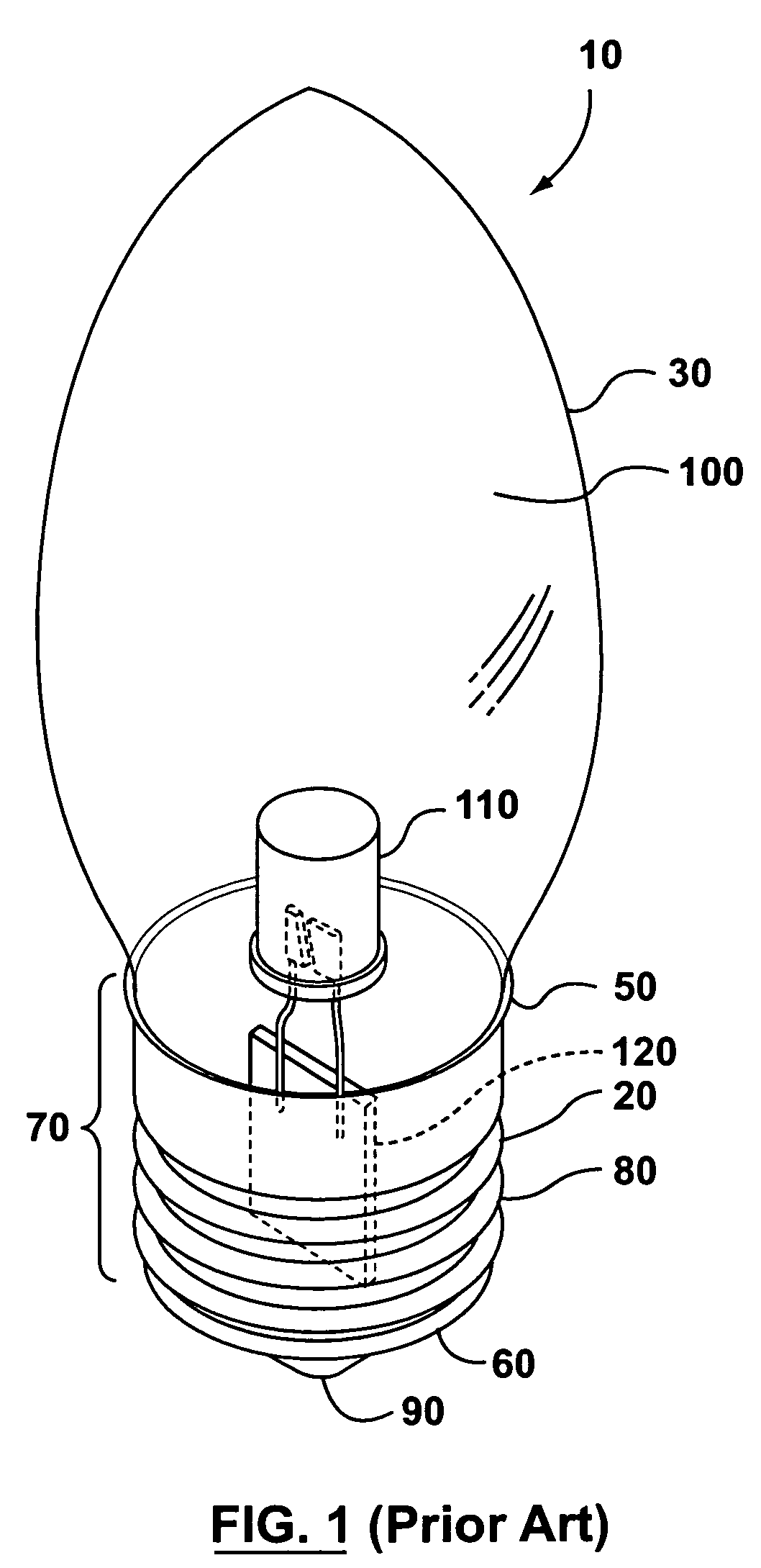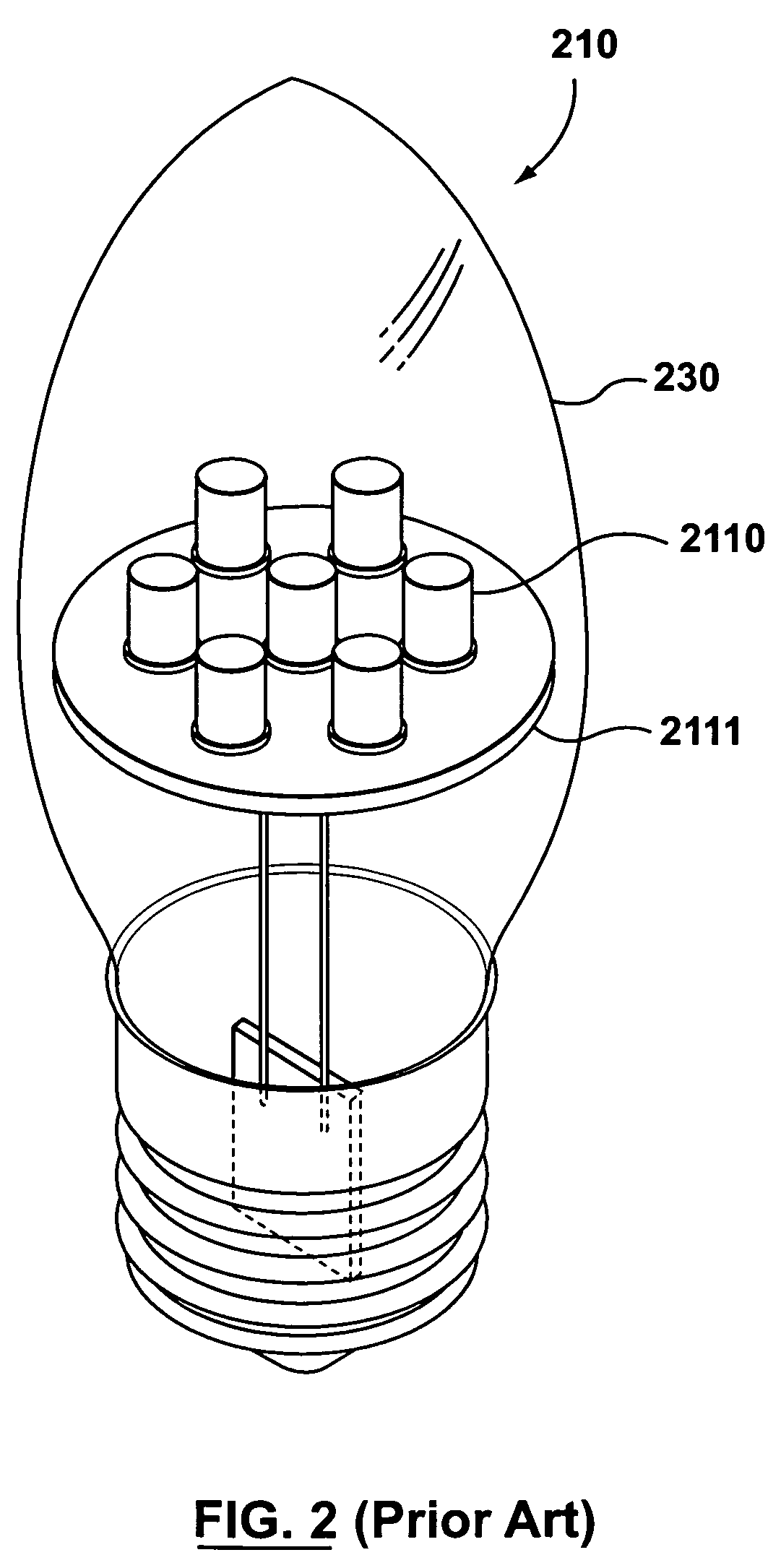Light emitting diode light bulbs with strands of LED's
a technology of led light bulbs and light emitting diodes, which is applied in the direction of lighting support devices, coupling device connections, lighting and heating apparatus, etc., can solve the problems of high inefficiency of incandescent process, limited typical lifespan of incandescent bulbs, and inability to further improve luminance, etc., to achieve convenient and practical use, less energy, and guaranteed luminance or brightness
- Summary
- Abstract
- Description
- Claims
- Application Information
AI Technical Summary
Benefits of technology
Problems solved by technology
Method used
Image
Examples
Embodiment Construction
FIG. 1 illustrates an LED bulb according to the prior art. The LED bulb, generally shown as 10, comprises a hollow base 20 and a hollow shell or sometimes referred to as an envelope 30. For the instant application, the entire article illustrated, for example in FIG. 1, is called a bulb. The LED inside the bulb, for example LED 110, is called an LED. The base 20 has an open end 50, a closed end 60 and a sleeve 70 between the ends 50 and 60. The sleeve 70 has external threading 80 so as to match internal threading in a bulb holder (not shown) for installment. The sleeve 70 serves as an electrode. In the central part of the closed end 60 is located a contact point or portion, serving as another electrode 90, and an insulating portion (8171 in FIG. 7) separates and insulates the two parts 70 and 90. When the LED bulb 10 is installed in a bulb holder, such as in a desk lamp, parts 70 and 90, acting as electrodes, are connected to the electrical contact points in the bulb holder. The elec...
PUM
 Login to View More
Login to View More Abstract
Description
Claims
Application Information
 Login to View More
Login to View More - R&D
- Intellectual Property
- Life Sciences
- Materials
- Tech Scout
- Unparalleled Data Quality
- Higher Quality Content
- 60% Fewer Hallucinations
Browse by: Latest US Patents, China's latest patents, Technical Efficacy Thesaurus, Application Domain, Technology Topic, Popular Technical Reports.
© 2025 PatSnap. All rights reserved.Legal|Privacy policy|Modern Slavery Act Transparency Statement|Sitemap|About US| Contact US: help@patsnap.com



